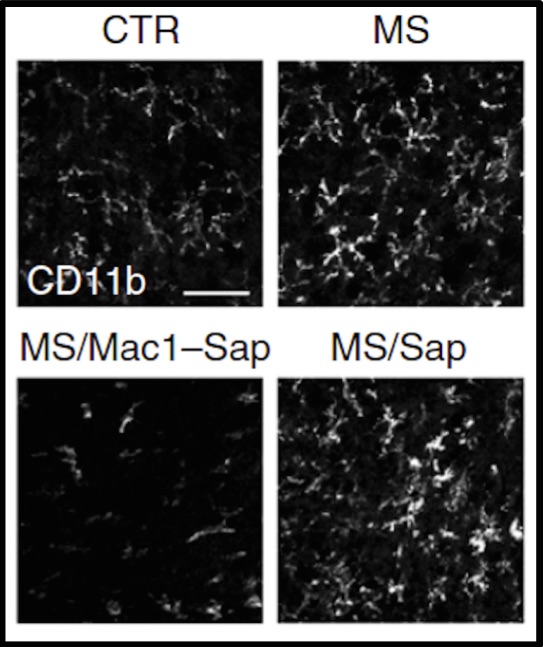Blocking microglial pannexin-1 channels alleviates morphine withdrawal in rodents. Burma, N.E., R.P. Bonin, H. Leduc-Pessah, et al. Nat Med, 2017. 23(3): p. 355-360. PMID: 28134928
The authors investigated the mechanisms underlying opiate withdrawal in rat. Depletion of spinal lumbar microglia by intrathecal injections of Mac-1–SAP (Cat. #IT-33; 20 mcg) decreased withdrawal behaviors and attenuated the severity of withdrawal without affecting morphine antinociception. Unconjugated Saporin (Cat. #PR-01; 20 mcg) was used as control and had no effect on spinal CD11b immunoreactivity or naloxone-induced morphine withdrawal.

Mac-1-SAP (Cat. #KIT-33; rat-specific or Cat. #KIT-06; mouse-specific)
CD11b is an alpha subunit of Mac-1, also known as CR3. CD11b is the receptor for the C3bi fragment of complement. This receptor is involved in bacterial phagocytosis. A reduction in neutrophil CD11b expression after severe traumatic injury correlates with increased septic complications. CD11b is a component of integrins, important for adhesion of neutrophils to surfaces. Mac-1-SAP recognizes the Mac-1 (CD11b) receptor and is an excellent research tool for in vivo use and also for removing contaminating macrophages from primary cultures to determine their role(s) in autoimmune diseases and in degenerative diseases such as Alzheimer’s.
